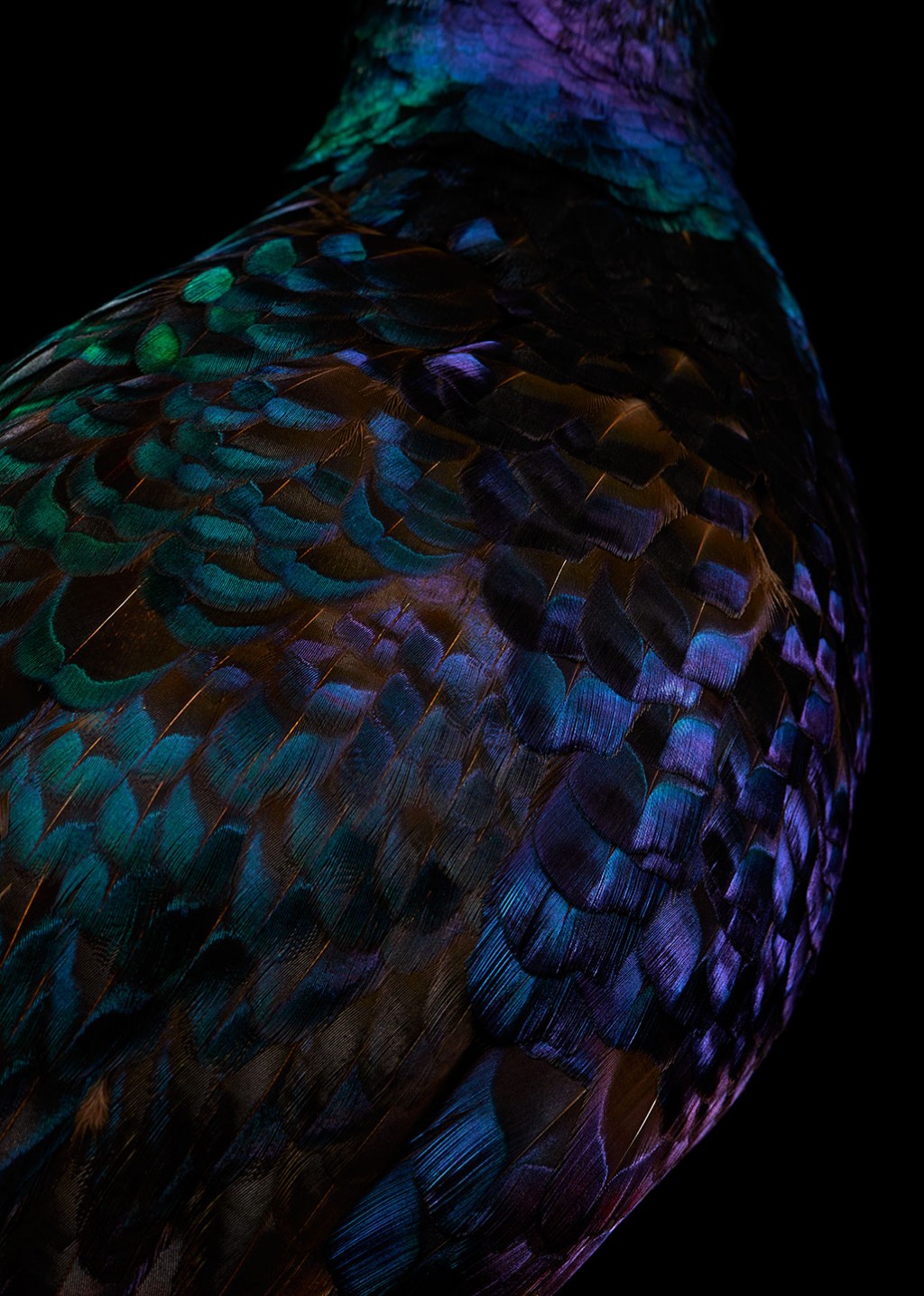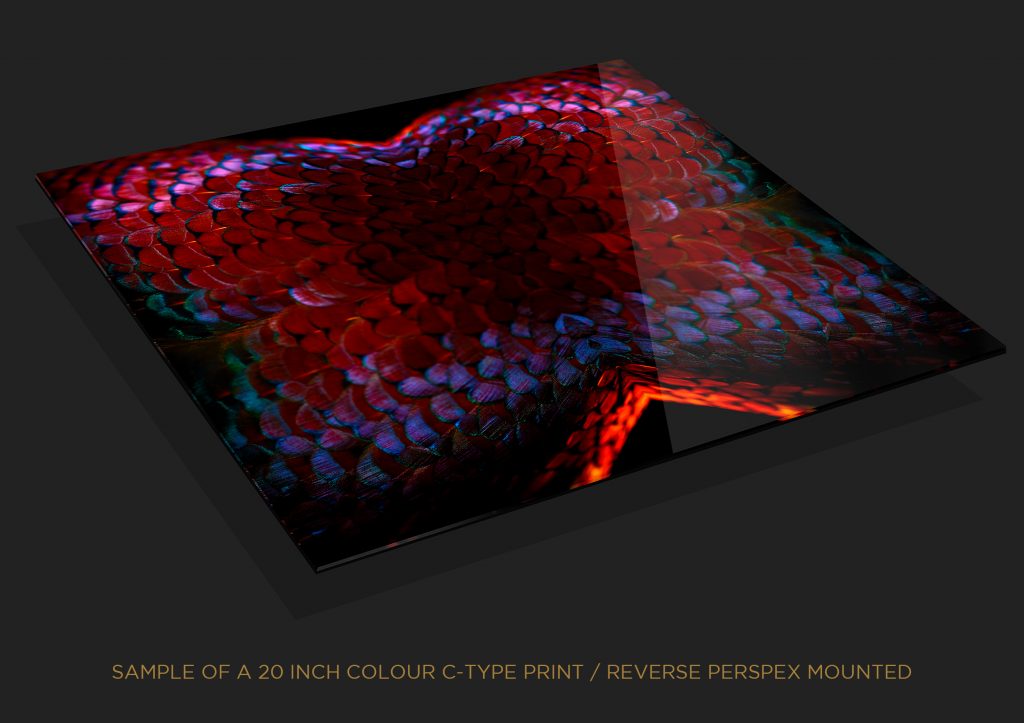Description
A limited edition fine art photograph featuring the breast and neck of a black pheasant (Phasianus Colchicus Mut. Tenebrosus).
Project: Plumis.
Bespoke: All prints are bespoke and printed to order.
Limited edition prints:
Steel’s digital C-Type prints are limited editions. No further prints are produced once sold.
40″ prints / edition of 15
30″ prints / edition of 20
20″ prints / edition of 25
Print dimensions:
40 x 26.6 inches / 101 x 67.5 cm
30 x 20 inches / 76 x 50 cm
20 x 13.3 inches / 50.8 x 33.5 cm
Presentation: Professionally printed and mounted between sheets of perspex (frameless).
Presentation explained:
Perspex mounting is a contemporary way to present photographic prints for interiors. The colour print is bonded to clear acrylic using a silicon gel and then backed with a black acrylic substrate. Once the Perspex has been bonded to the front of the print the appearance is of high definition with deep saturated colour. The completed piece is supplied with an aluminium sub-frame, which floats the panel from the wall. Reverse perspex has a reflective diamond polished finish with a stunning flawless result. Printed, mounted and finished by Metro Imaging.
Orientation: This artwork is best displayed vertically.
Authentication: Prints are signed on verso and supplied with a Certificate of Authenticity.
Delivery: Metro Imaging in Central London use an experienced shipping service to deliver the reverse perspex mounted prints. Metro take great care ensuring that prints are very well protected and efficiently delivered in the UK and overseas. Metro offer a vast array of delivery options to suit the recipient’s preference, all of which is overseen by Mr Steel.
Subject information:
This melanistic mutant is a pure breed. These large, beautiful pheasants feature an iridescent, greenish-blue-black plumage. A favourite variety for release, they display a remarkable ability to survive and reproduce in the wild. The Melanistic form of the Common Pheasant was first observed in Norfolk in 1880 and was not bred as a mutation until the 1920-30s when a few dark coloured hen were located in Cambridge. The bird was first thought to be a hybrid between colchicus & versicolor, as dark versicolor had been found in wild birds in Japan, however, experimental breeding in the early years of the mutation found this not the the case. This is a pure mutation, in which when bred to normal coloured birds, the chicks are either mutant or normal, with the normal coloration dominate. When two mutants are bred together, they breed true. It is uncertain which specific subspecies was known to have produced the mutation as the majority of birds on Great Britain are a mixture of the different races released for sport. The year it first appeared in American aviaries is uncertain. As we enter the 21st Century, there are still a good number of this mutation available in aviculture that breed true. There are perhaps more of this mutation in existence than some of the pure races of colchicus. This mutant has been observed in wild populations in both the UK & the US. It is sometimes confused with Phasianus versicolor, but should be noted that this is a much darker bird.
Image copyright: © Patrick Steel.


Recent Comments